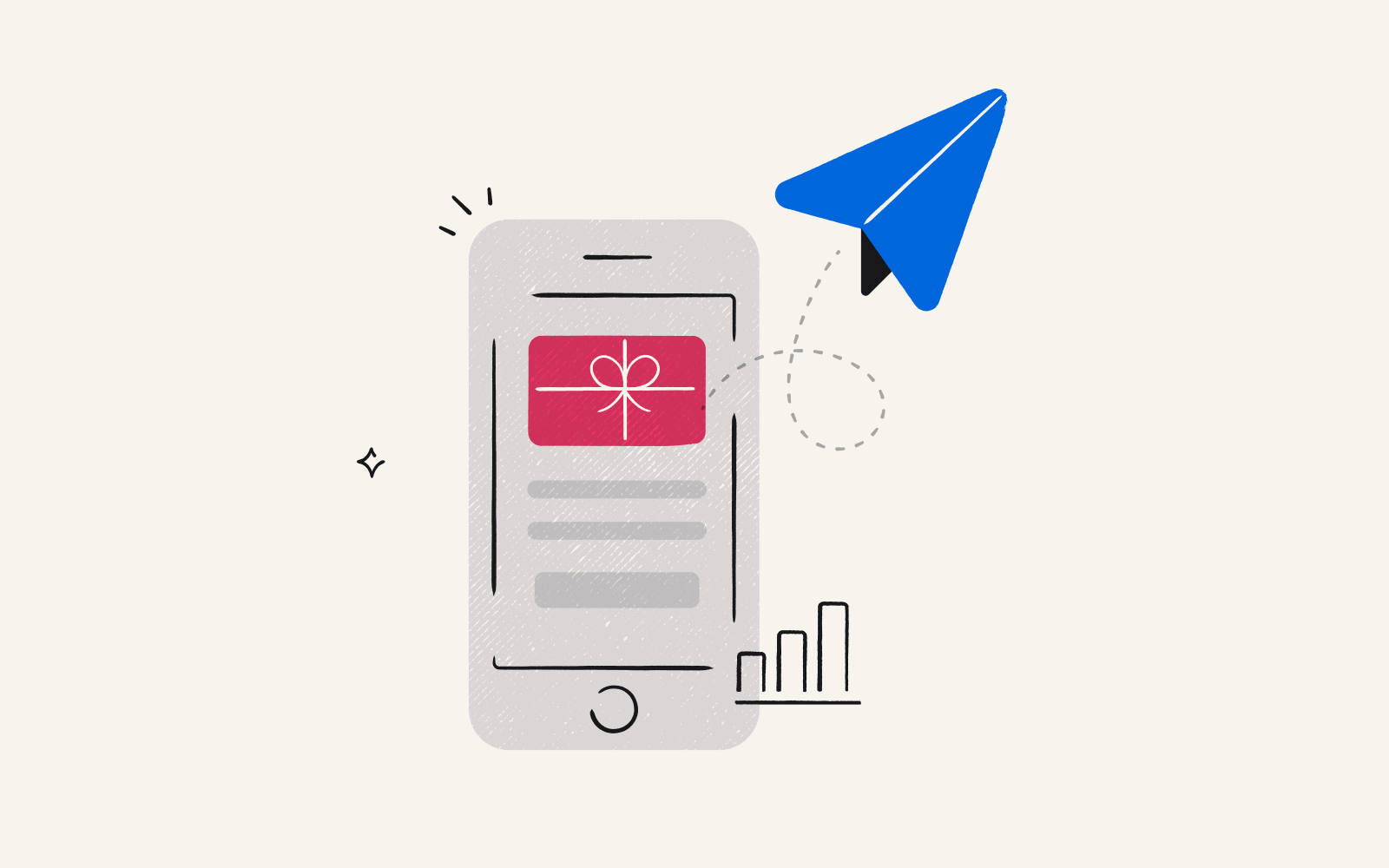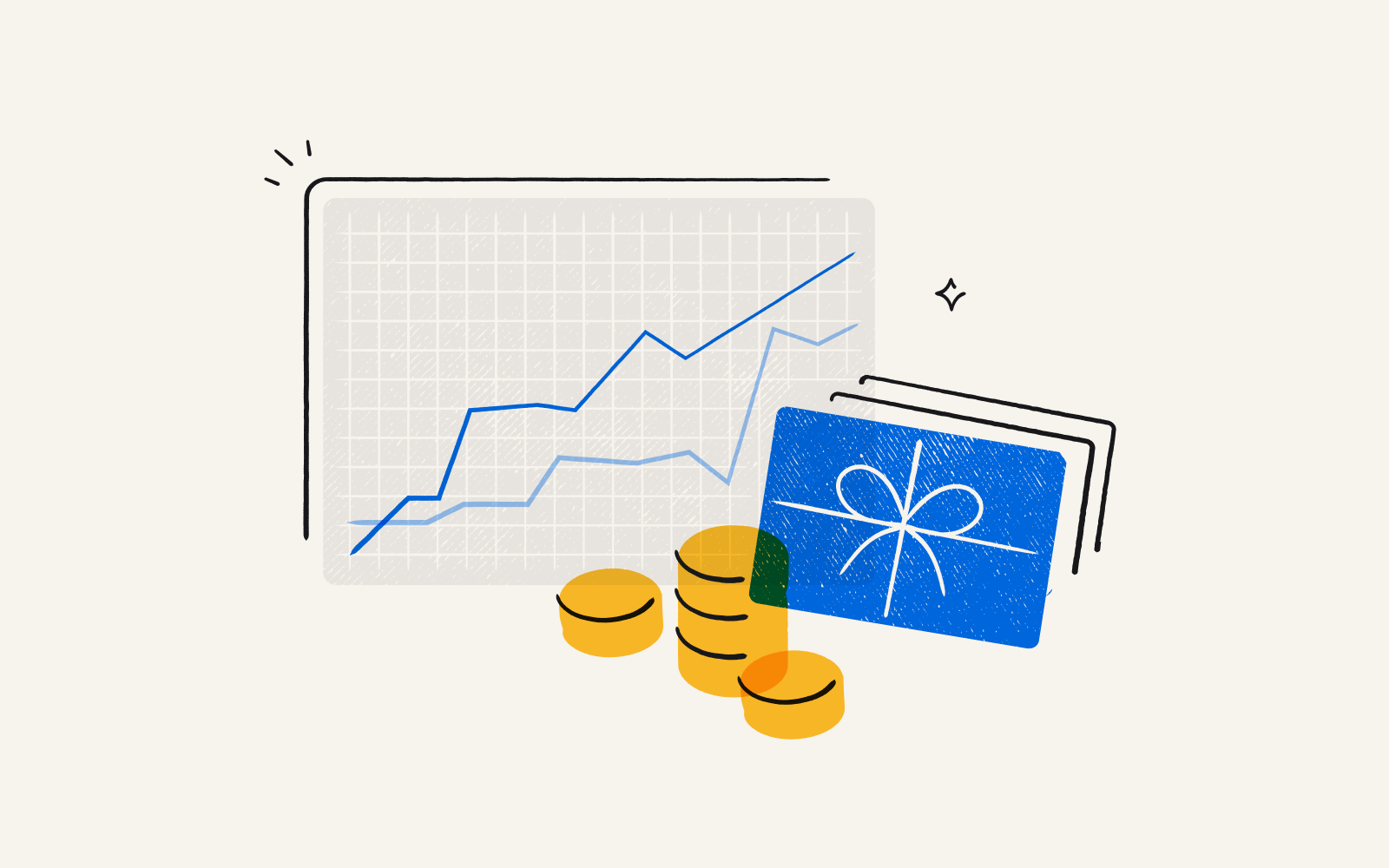How to build a customer referral program
By Aaron Small|5 min read|Updated Oct 2, 2023
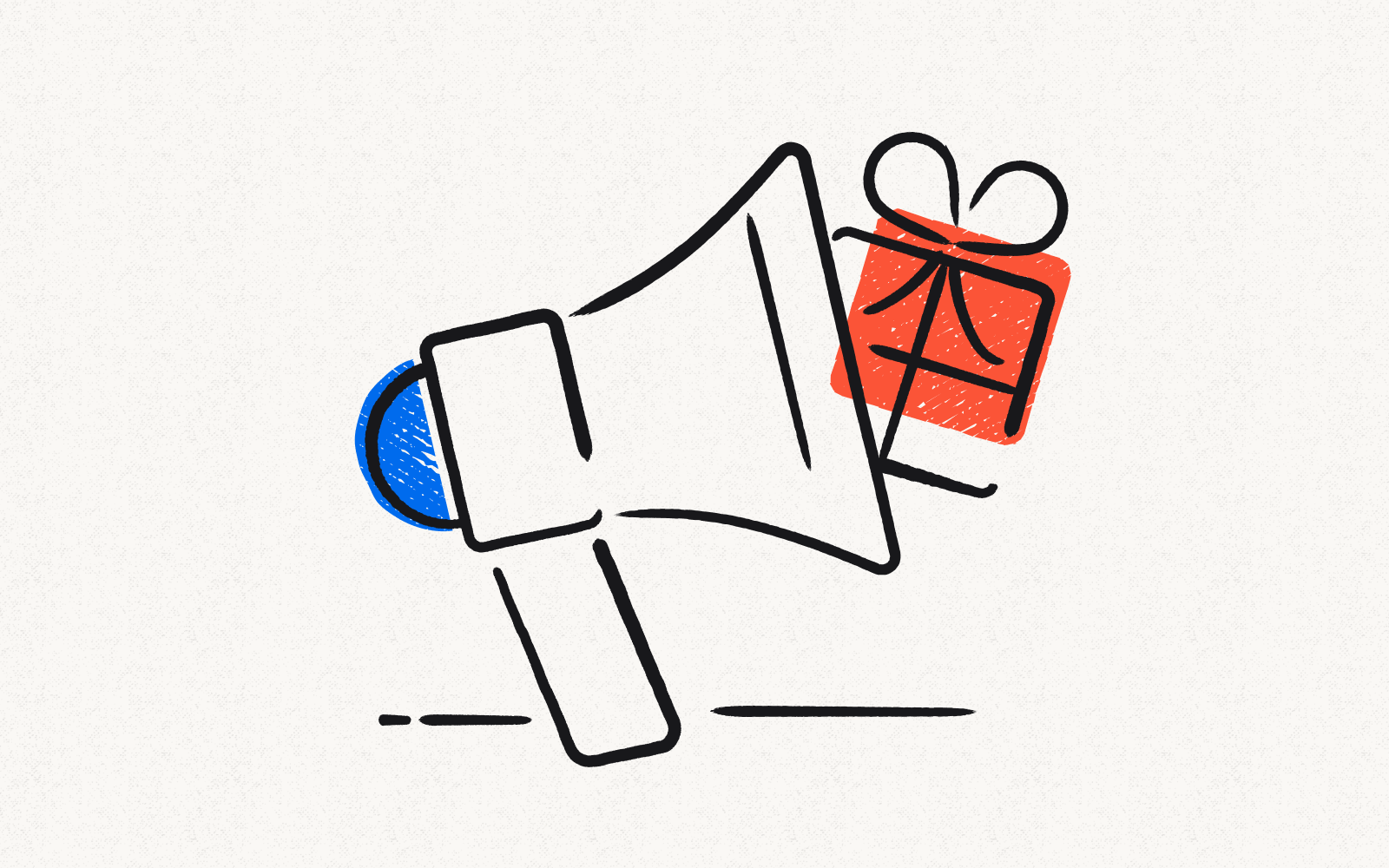
Overall, there are two main approaches when running a customer referral marketing program: you either pay people, or you don’t.
If all your customers feel delighted and enthusiasm is through the roof, then there’s no pressing need to provide incentives for referrals.
But for most companies, incentives matter.
Client referrals help drive engagement. Ryu and Feick (2007) found that rewards increase referral likelihood regardless of reward size, especially for weak ties and weaker brands. A little goes a long way.
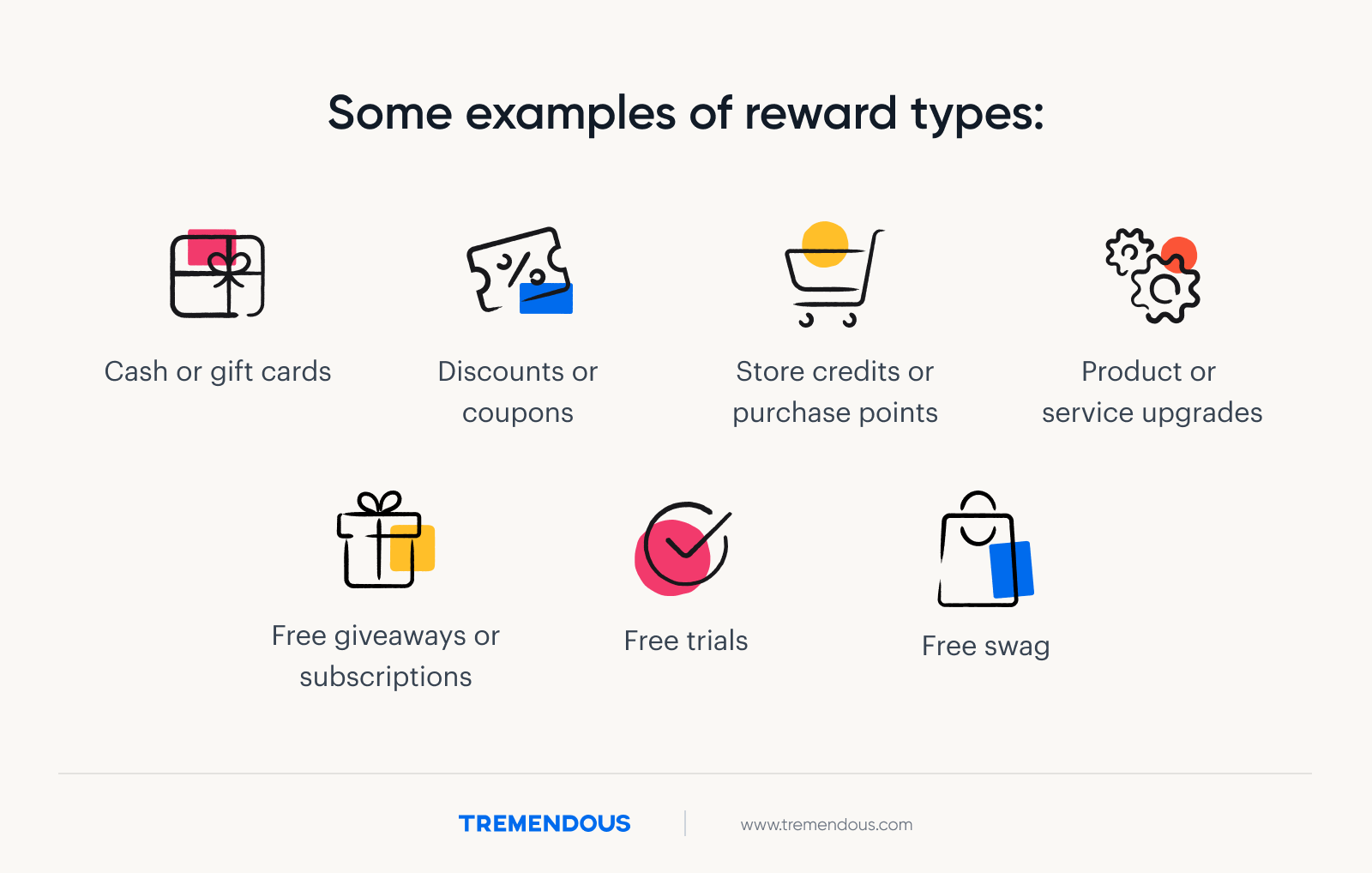
Both cash and product discounts are effective rewards for businesses to offer their satisfied customer base to generate referrals. But among a list of companies with successful referral programs, a majority of them reward with cash and gift cards.
And in an A/B test by Friendbuy, when gift cards were offered as the referral reward, they performed significantly better than discounts.
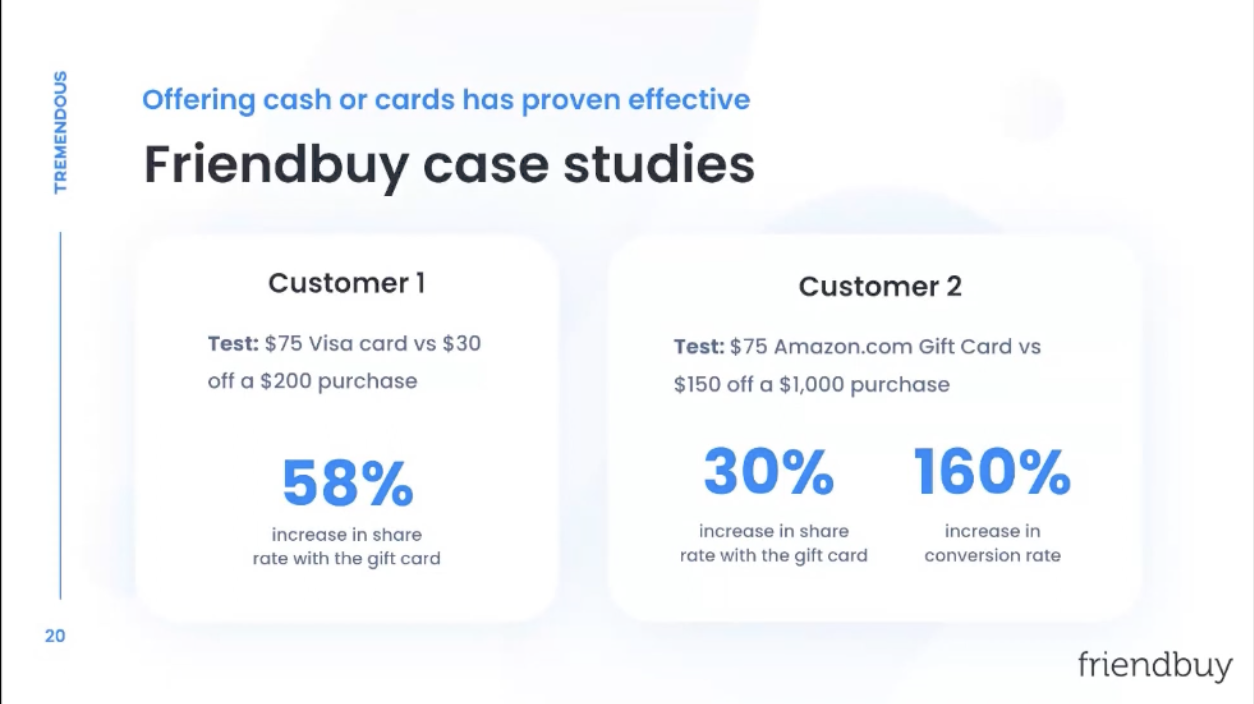
Even when the discount is double the amount of the gift card, there was a 30% higher share rate. And an increase in conversion rate of 160%.
What is referral marketing?
Referral marketing is a customer acquisition strategy whereby companies incentivize current customers to recommend their product, service, or brand to friends and family. Companies offer a variety of different kinds of incentives as part of customer referral programs – anything from discounts, to swag, to gift cards, to cash rewards.
A referral marketing program is a key tool every company should have in its arsenal given the exorbitant ROI of referred customers. Just one example: one study found referred customers spend 200% more than their non-referred counterparts.
How do you build a strong referral program?
If you’re a startup looking to drive adoption to your customer referral program without breaking the bank, then a one-sided referral program that rewards only your current happy customers might be your best strategy for the short term.
If you’re a strong, recognizable brand and hoping to develop referrals among people with strong ties (family members or close friends), then rewarding both the recommender and the receiver is essential.
But remember the rule of metaperception: when money is involved, people care how they’re perceived by others.
If the recommendation seems out of left field or hard to justify, people will raise eyebrows and question the motives behind the referring: All this effort so they can make ten bucks?
The solution? Up the amount of the referral reward. And you’ll see even better performance when you reward both sides. (Jin, L. et al., 2014).
Learn about the value of custom referrals.
Key elements of successful customer referral programs
Not all customer referral programs are created equal. A few key components distinguish a great program from a mediocre one. Below are a few ways marketing teams can fine-tune their customer referral programs to optimize for success.
Have a clear value proposition
Be straightforward and direct with what you’re offering customers who participate in your referral program.
Your CTA should be clear and enticing to drive participation.
So first, decide which type of reward you want to give. Going with gift cards? Great.
Gift card processing is easy to execute with Tremendous. You can send over 1,000 digital gift and prepaid cards to just about anywhere in the world, for free. Plus, you’ll have a central dashboard to buy and track everything.
If you’re looking for a creative alternative option, make sure that the referral reward fits your brand.
Say you’re in the shoe business. Rewarding your customers with teeth-whitening kits doesn’t fit. Instead, you can offer early access to new drops or special giveaways.
When framing your proposition, words matter. Your CTA will generally take two forms:
Selfish incentives that benefit the sender: “Get $20 off your next order when you refer a friend.”
Pro-social incentives that benefit the receiver: “Gift your friend $20 when they sign up.”
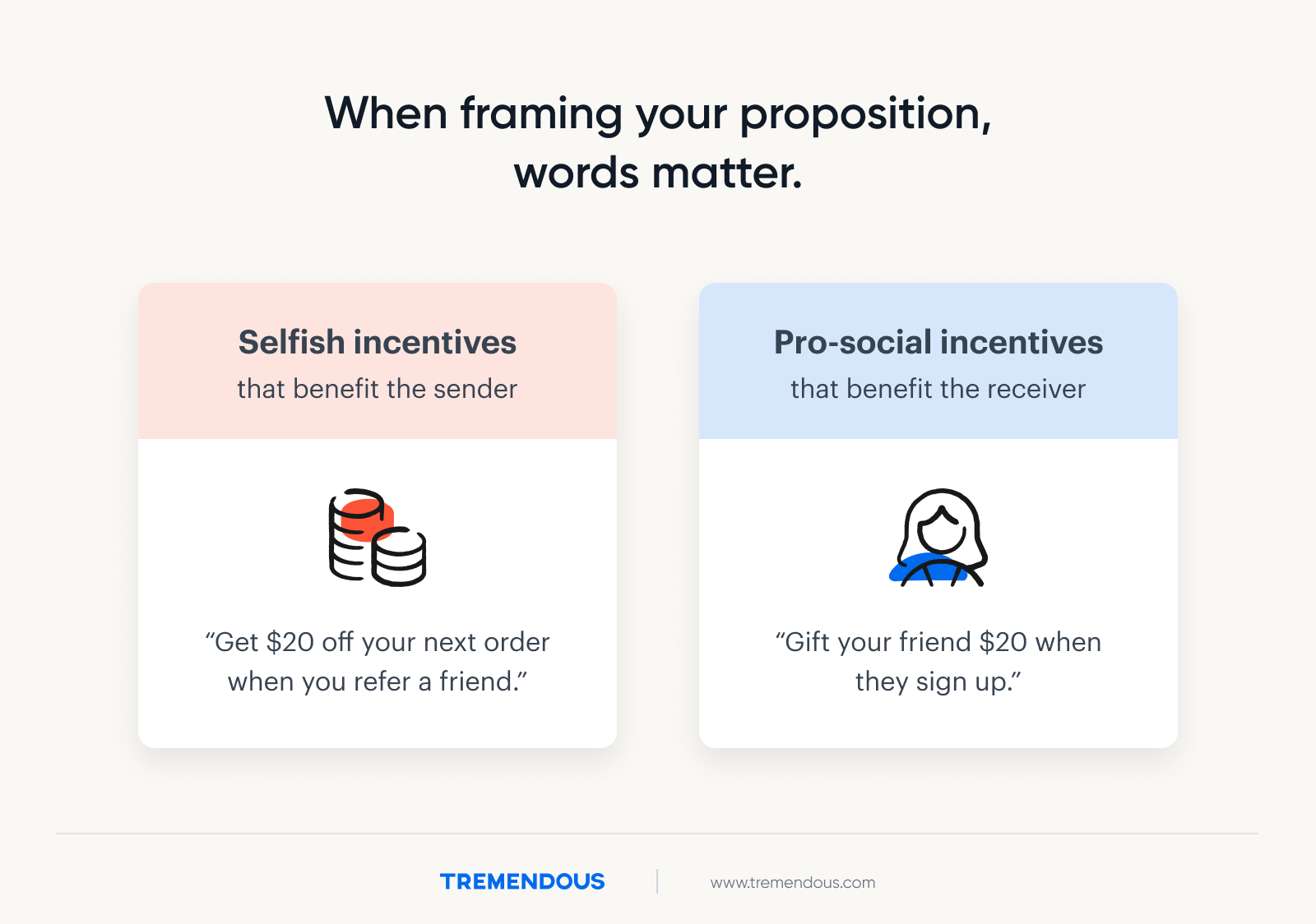
Both work well. But a large-scale study found that the call-to-action with kindness can be more effective to activate your customers. Here are some examples to explore.
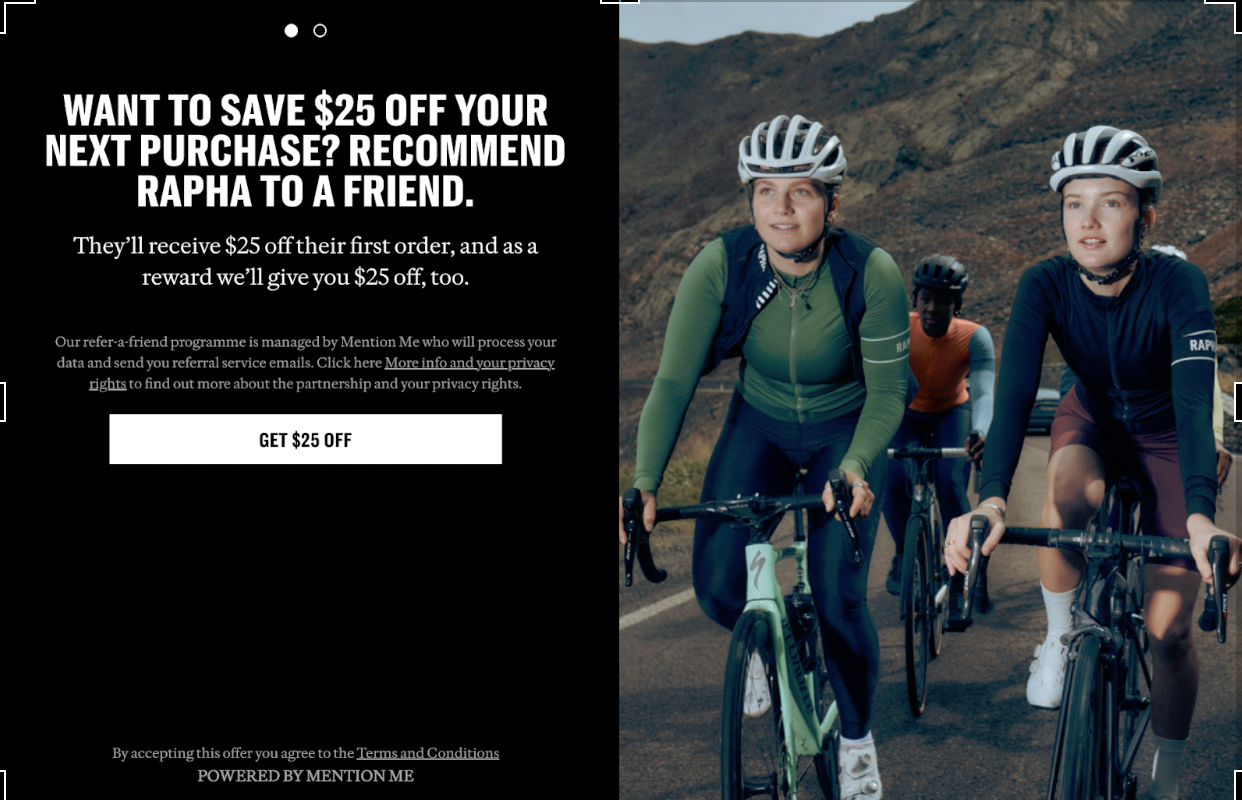
Takeaways:
Maintain your brand consistency.
Posing the CTA as a question draws your attention, doesn’t it?
Reward both sides for higher engagement.
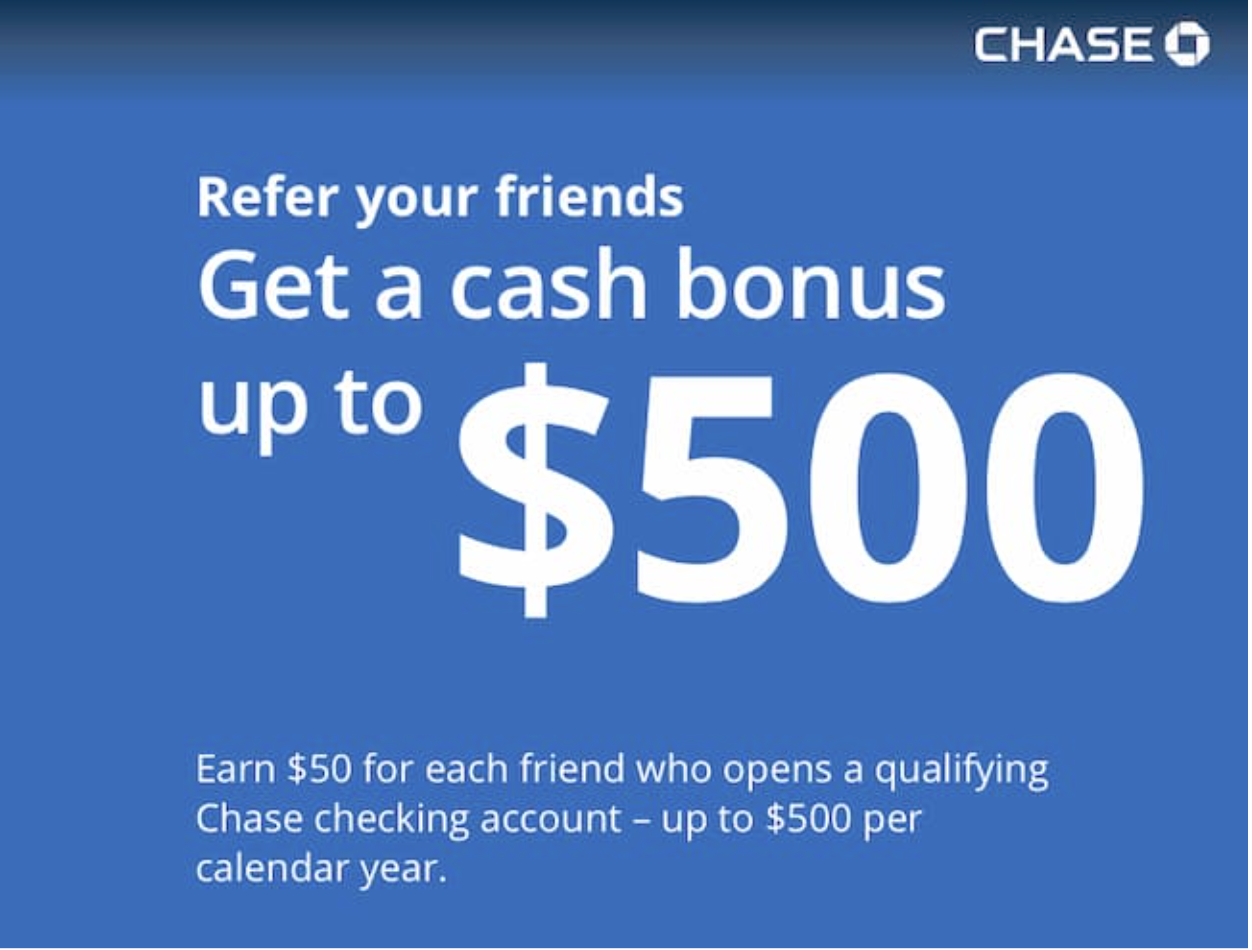
Takeaways:
Go big and bold with your offer.
Make the reward type match your audience. In this case, money talks.
Leave the details down below.
Make referrals easy to do
If your referral program has too many moving parts, people tend to jump ship. From design to copy, keep it straightforward to keep them aboard.
Spell out the steps.
Make your page easy to scan.
Make your program easy to manage.
This referral example by Google Workspace uses a clean design and a 1-2-3 format.

Remember to make the referral process user-friendly and shareable. Let your customers decide how to refer. Platforms like Friendbuy allow customers to share via:
Autofilled emails
SMS
Personalized links
Social sharing

Invest in software
Lastly, part of your referral marketing strategy should be to make the whole process easy on yourself.
Tremendous makes it simple for companies big or small to buy, track, and manage incentives at scale. With us, you can instantly reward your recipients individually or in bulk with gift cards, prepaid Visa® cards, cash, and more.
And our easy-to-use dashboard saves you time and headaches. In fact, businesses that use Tremendous save 2 days a month.
How to promote customer referrals
A surprising number of referral programs don’t get off the ground for one reason – customers don’t know it exists.
Make sure to dedicate serious real estate across your channels to keep their eyes on the prize.
Promote on:
Website main navigation, and top announcement bar
Pop-up windows
Post-checkout pop-ups
Post-purchase emails
Newsletters
Social media
Influencer partnerships
Podcasts
So, first action item? Send out a launch email to your subscribers announcing the new referral program. Your customers can’t engage if they aren’t aware of the opportunity.
While ads, podcasts, and paid placements in newsletters are a great way to amplify your referral program, you need to promote your offering to existing customers first. And there’s no better way to connect with existing customers than via your internal CRM.
In addition to a promotional blast to existing customers, consider integrating in-app messaging into your product to inform current users of your referral program.
Podcasts
Podcasts have exploded as a mainstream medium. Edison Research states that 46% of listeners have made a purchase after hearing an ad on a podcast.
Podcasters can bring a layer of authenticity when promoting brands, strengthening the feeling of trust and credibility.
The strategy is simple: Podcast hosts promote your brand to their listeners with a unique referral link that also includes a discount on your product.
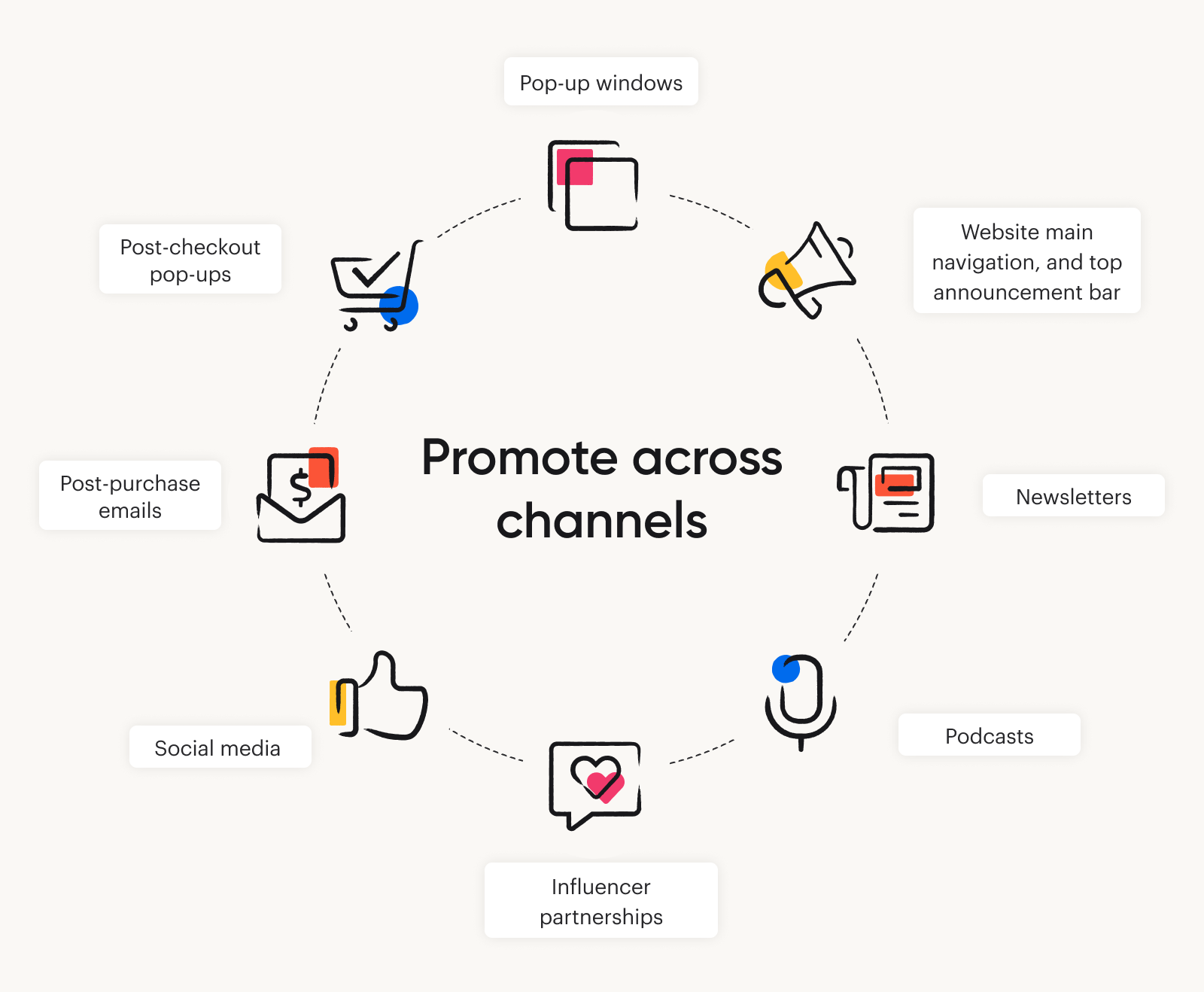
Examples of successful client referral programs
Cash Rewards
If you’re on the fence about offering cash or discounts, here are some scenarios where cash is king.
For one-time purchases. If you’re selling high-end gym equipment, you can expect people aren’t buying twice. So reward your referring and new customers with cash, in the form of a gift card. Giving them retailer options is nice, too. Tremendous partners with 900+ retailers for tons of possibilities.
For high-consideration purchases. Think mattresses or jewelry.
For regulated industries. Where discounts can’t be given, like insurance companies.
For limited SKUs. Items like teeth-alignment kits.
For low-consideration items. For “lower sensitivity” categories, like cell phone plans or clothing retailers.
There’s one interesting exception to the rule of high-end purchases.
Kornish and Li (2010) found that for products or services with higher sensitivity, like LASIK or fertility treatments, there’s an element of risk involved when referring.
A good outcome is great, but a bad outcome could be painful. Making money off a bad outcome feels bad.
So offer a discount on the product. And make it a sizable one, too.
How you communicate the reward amount also matters.
Jonah Berger, a marketing professor at Wharton, shares the “100 rule” in his book Contagious.
“Whichever number is higher, the better. For a $2,000 item, $500 off seems larger than 25%, which makes people more likely to purchase when they see the absolute dollar discount.”
When applied to rewards, especially for discounts, if the amount is below $100, it’s better to share the percentage of the discount rather than the absolute number.
Explore examples of businesses incentivizing customer referral programs.
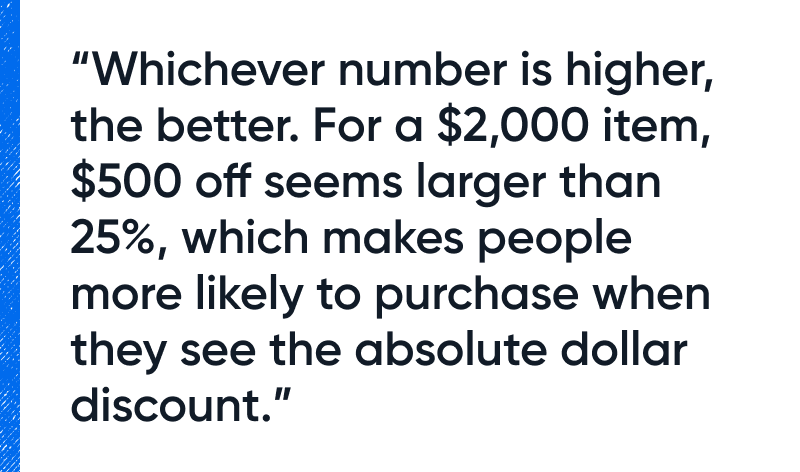
Gift Card Referral Incentives
Let’s say you’ve decided to use gift cards as your incentive. Who gets what?
Reward Me: Your current customer gets a reward
Reward You: Your referred customer gets a reward
Reward Both: A rewards party for everyone.
Deciding the best approach seems to depend on company size.
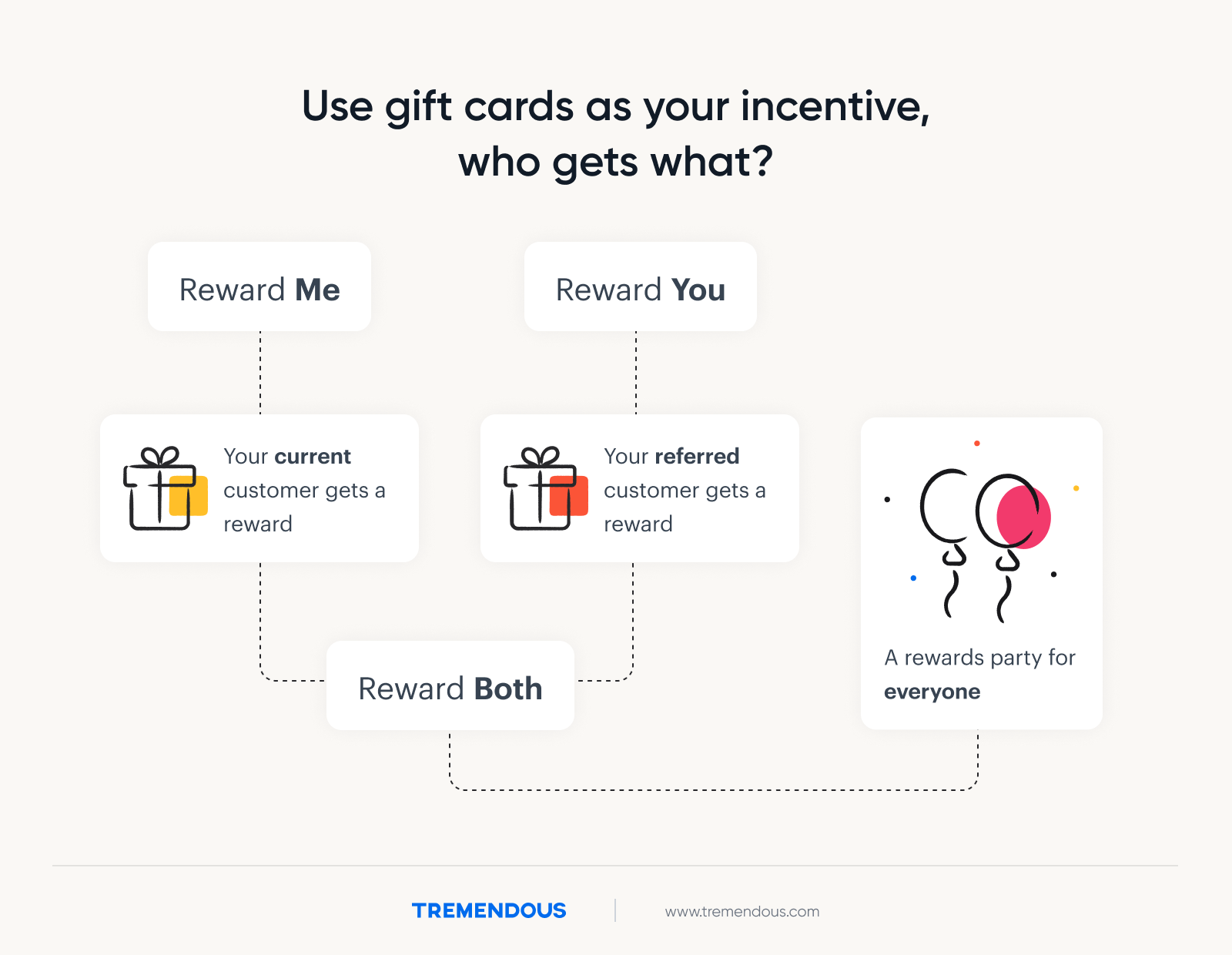
Case studies: Successful programs in action
Every referral marketing program is a bit different. While the best programs have a few components in common, they also have their own unique twist. Below are a few referral marketing programs that are especially well-designd.
Dropbox: Free storage for everyone
Dropbox, the cloud and storage company, hit a home run with its referral program in 2009. They generated an impressive 3900% growth in just fifteen months. How did they spark so much customer acquisition?
By tapping into an insight: people will always want more space.
Whether it’s your kitchen, closet, or digital storage center, it’s hard to refuse more shelves. The startup seized the opportunity to reward both sides of the referral with more Dropbox space.
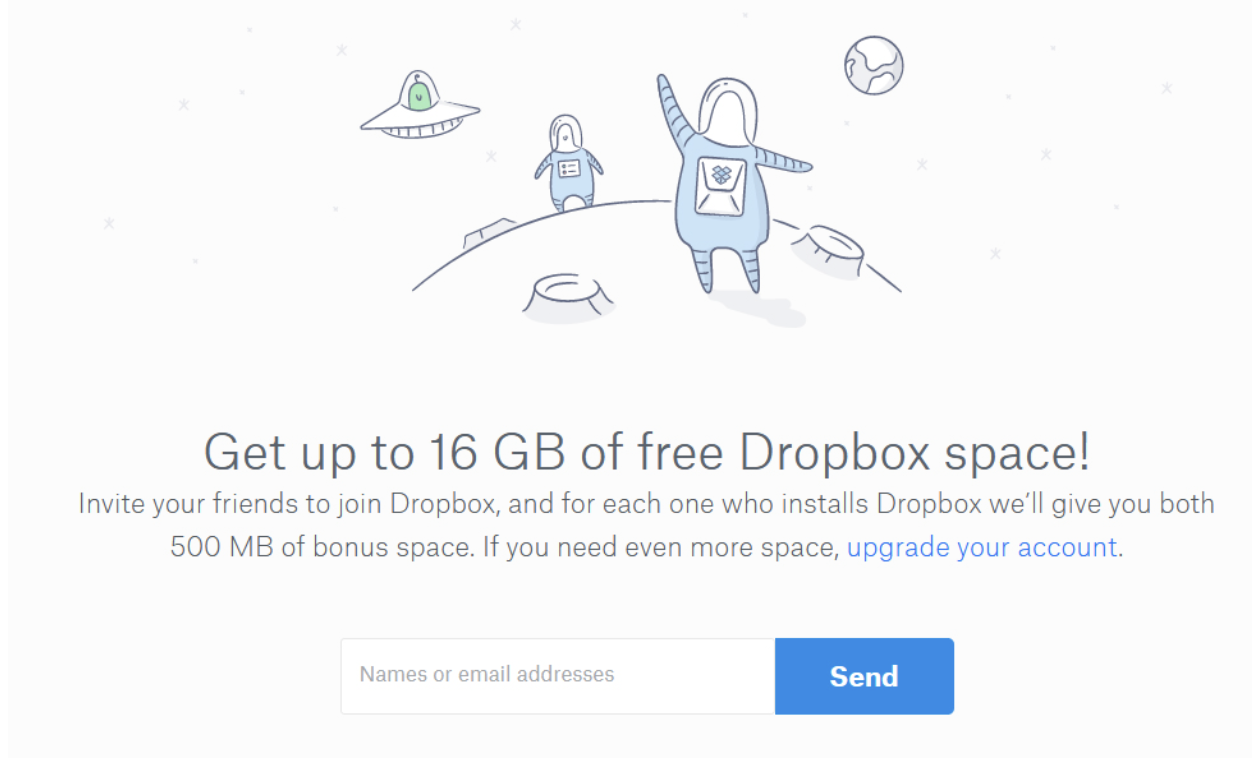
Even if you didn’t reach 16 GB of free space, it didn’t matter. The reward of 500 MB feels big and sounds exciting – all you needed to do was write down a friend’s email address.
But other aspects of the program helped fuel the fire.
Referral prompts appeared when new users signed up for Dropbox, leveraging their excitement for the product.
“Thank You” emails were delivered to recommenders whenever their receiver signed up.
A personalized dashboard allowed users to track their referral progress, and see how much space they’d racked up so far.
Cute aliens and astronauts.
When building your program, ask yourself:
What reward can you give customers that’s unique or relevant to your primary service?
How can you dial up the fun and make the referral journey more friendly?
Where can you personalize the experience for customers?
Uber: Racing for more riders and drivers
Uber created a frictionless referral program to scale up the number of drivers and riders. With an emphasis on user experience and dual-sided incentives, they surged past the competition to lead the market. Here’s how they did it.
Uber launched separate referral programs for riders and drivers. With an in-app program, they made it highly accessible.
Riders saw ‘Free Rides’ from the main app navigation – a more compelling CTA than the standard ‘Refer a Friend.’
From there, they were prompted to share the app and earn a reward. Both sides earned Uber ride credit.
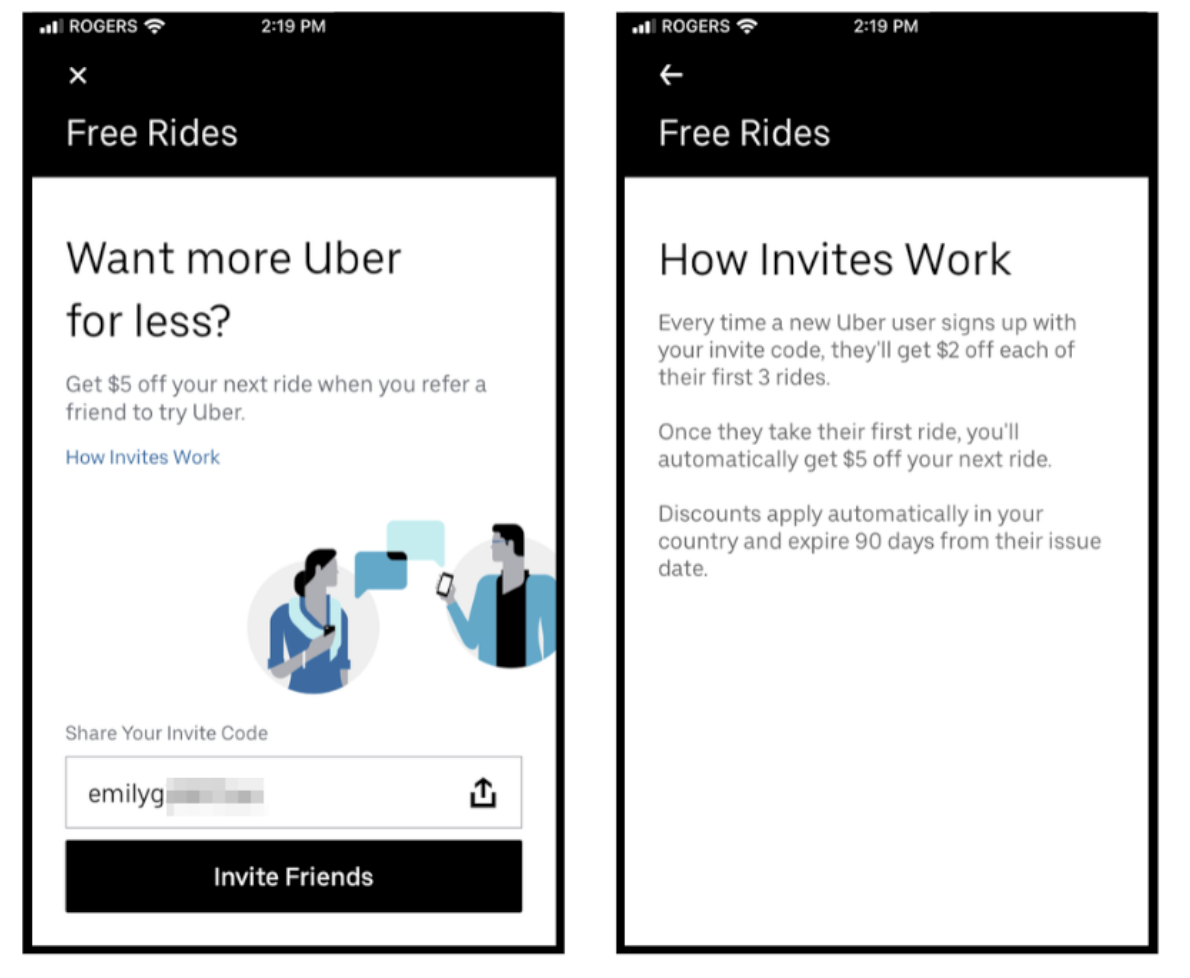
Uber made another clever play: free credits were spread over multiple rides – ensuring more activity within the Uber ecosystem.
The driver program operated similarly, and the customer journey was simple to operate.
Drivers send referral codes to their friends from the app itself, personalizing the message.
Drivers can track their referral activity on their dashboard or in the Driver app. Uber also automatically follows up directly with status updates.
Senders earn their reward only once their invitee completes a certain number of trips. This helps reduce fraud and creates a psychological milestone for new drivers to hit.
In the race for ridership, the Uber referral program was a huge success. In May 2023, Uber accounted for 75 percent of U.S. rideshare spending.
When building your own program, keep these in mind:
How can you simplify your sharing and referral process for customers?
Writing is design. How can you craft your referral CTA to be more inviting and engaging?
How can you follow up with your customers throughout the journey?
Airbnb: Growing an empire one home at a time.
Testing and iterating ideas can make all the difference. In 2013, Airbnb decided to relaunch its underperforming referral program.
Going with a mobile-first strategy, they made a few significant choices.
Vary the rewards. Referring hosts received cash, and referring guests received credit.
Personalized invites. In the referral email, Airbnb included a profile photo of the sender, which added a touch of humanity to the process and helped reduced dropoff.
Test the language. Gustaf Alströmer, Growth Product Manager at Airbnb, swapped headlines to see if a social or selfish headline would improve engagement. The team discovered that the idea of ‘giving’ was more sticky and led to more invitations being sent.
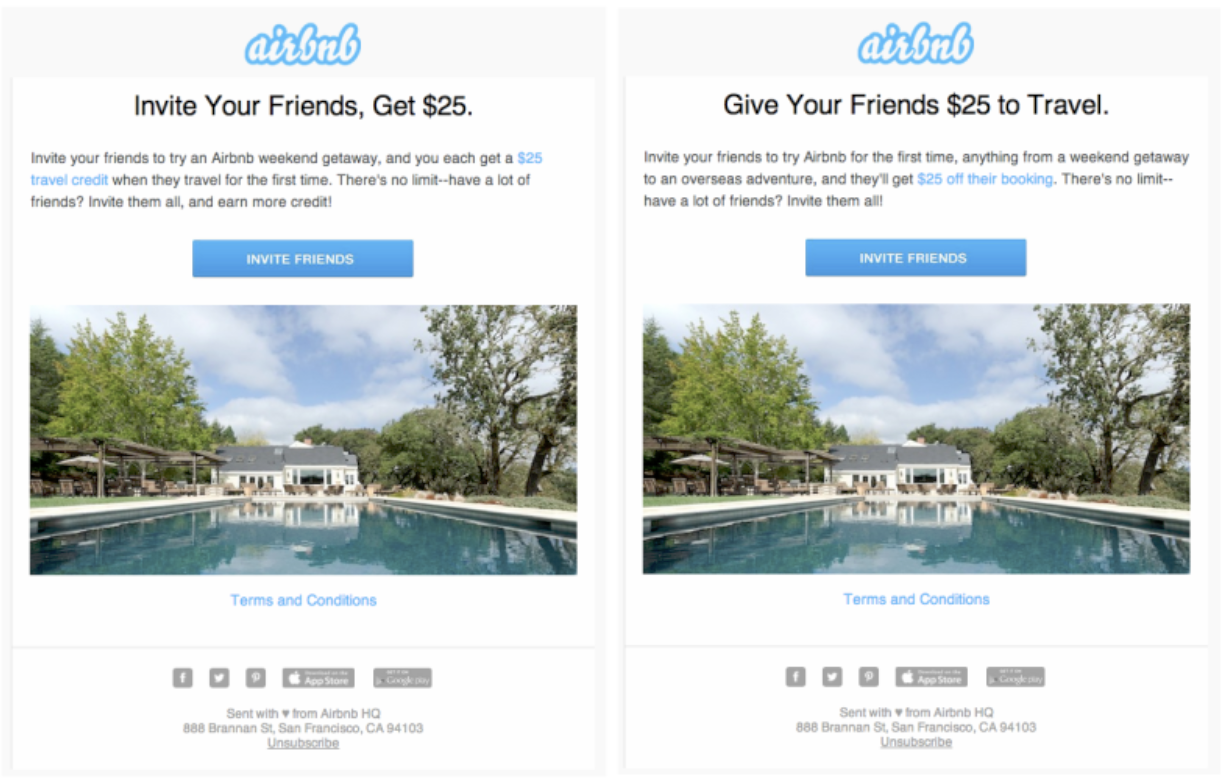
In 2022, the global revenue of Airbnb was 8.4 billion U.S. dollars. In January 2023, Airbnb.com was the third most visited travel and tourism website worldwide.
When building your own program, keep these in mind:
Do your customers prefer store credit or cash? What will lead to a higher rate of retention?
Once you have a framework in place, where can you iterate?
How can you personalize the experience?
Conclusion
Referral programs are cost-effective strategies that yield high-margin growth for your business.
As Samantha Samuels, head of partnerships at FriendBuy put it: “Every customer you acquire through referral is one less you need to acquire through a paid channel. “
Referrals also identify your best customers, tapping into the power of word-of-mouth between friends or family members who already know and trust each other.
And the high customer lifetime value can’t be overlooked. Referred friends convert faster, and their value can be 3x or 4x more than a standard customer.
Ready to build your referral program?
If you’re looking to scale up your business sustainably, referral programs must be part of your arsenal. And Tremendous is ready to partner with you to help you launch it.
Why go with us?
Transparent pricing: Tremendous is free to use.
International coverage: Send rewards to customers in more than 80 countries. We handle conversions easily.
Bulk ordering: Need to send 500,000 digital gift cards tomorrow? We’re fully capable to handle rewards of that size.
Customize rewards: Build a cohesive brand experience with custom designs and messaging.
Flexible platform: Manage multiple teams and budgets — on one account.
Automate rewards: Connect to the Tremendous API to automate reward distributions.
We partner with organizations both big and small, from Google to Pinterest to United Way – saving them time, money, and hassle and helping them grow their business at scale.
Let’s grow yours. Request a demo and our team will be happy to walk you through the platform.
Published October 2, 2023
Updated October 2, 2023

